Key takeaways:
- Composition in film is essential for crafting emotional responses and guiding viewers’ engagement through careful arrangement of visual elements.
- Key techniques include the rule of thirds, leading lines, and the use of negative space, each enhancing storytelling and audience connection.
- Personal experiences illustrate how elements like symmetry and depth can change audience perception and evoke emotional resonance.
- Case studies highlight the power of contrasting compositions to evoke strong emotional reactions and create immersive viewing experiences.
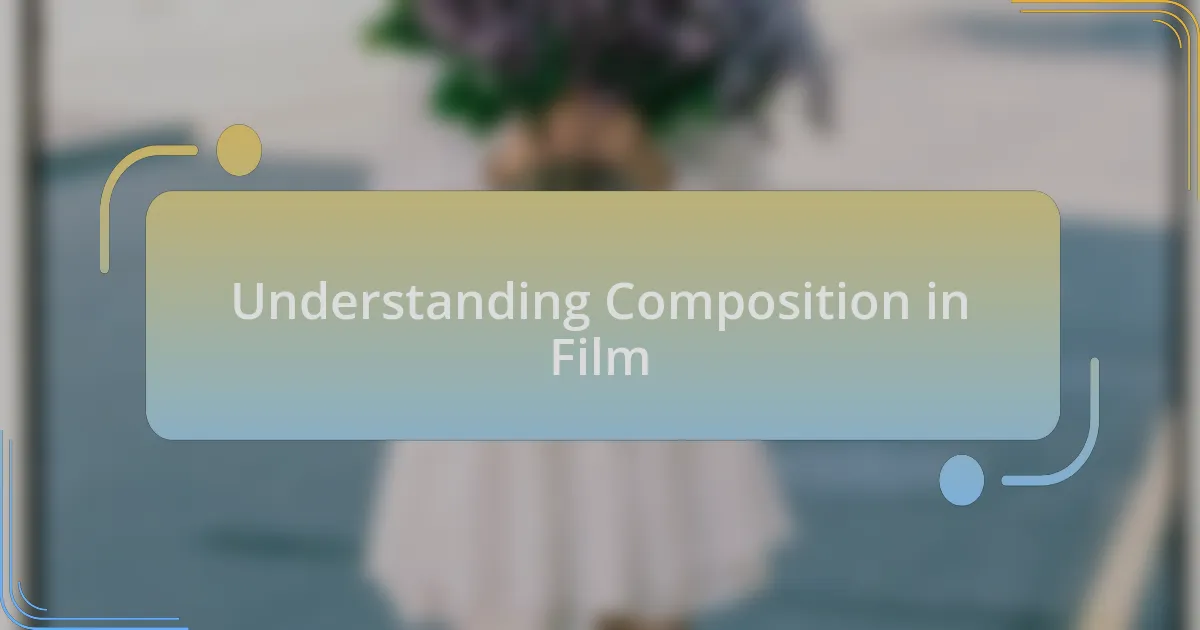
Understanding Composition in Film
Composition in film is the art and science of arranging visual elements within a frame. It’s fascinating how a slight shift in the position of the camera can evoke completely different emotions in the audience. I remember working on a short film where we intentionally used diagonal lines to create tension, and it was incredible to see how viewers physically reacted to those angles.
When I first started experimenting with composition, I found it surprisingly difficult to grasp just how much influence it has on storytelling. Have you ever watched a scene and felt an unsettling energy, even when nothing overtly dramatic was happening? That’s often the power of composition at work—balancing elements like light, space, and color to guide the viewer’s emotions subtly yet effectively.
One principle that stands out is the rule of thirds, which suggests that by dividing the frame into a grid, you can create more dynamic, engaging shots. I recall applying this rule during a pivotal moment in my film, positioning my actor off-center to create space for the looming background elements, which bolstered the narrative tension. It’s moments like these that remind me how composition isn’t just about aesthetics; it’s about crafting a visual language that speaks to the audience.
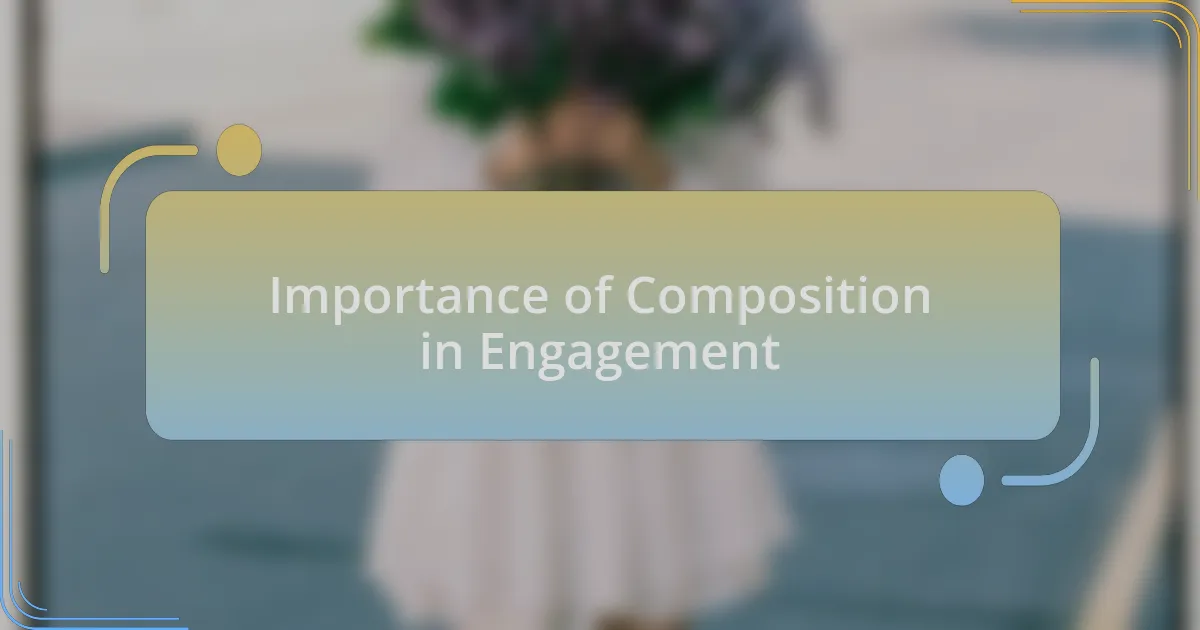
Importance of Composition in Engagement
When I think about the importance of composition in engagement, I often reflect on the emotional response it can provoke in viewers. For instance, there was a scene in a project I worked on where we deliberately framed a character in a small, confined space. The way we arranged the elements around them not only emphasized their isolation but also drew the audience into that feeling of claustrophobia. Can you imagine the difference if we had framed the character more liberally? It would have dulled that potent emotional punch.
Furthermore, the balance within a composition can subtly guide the viewer’s attention and understanding of a scene. I vividly recall a moment when I contrasted a chaotic foreground with a tranquil background in one of my films. The visual tension created a sense of anticipation, making the audience lean in closer, eager to see what would happen next. Isn’t it fascinating how positioning can transform viewers into active participants, rather than passive observers?
In my experience, employing leading lines and symmetry can transform a standard shot into a captivating visual experience. There was a time I used parallel lines in a landscape shot, which not only drew the viewer’s eye through the frame but also mirrored the character’s journey. These elements of composition become a silent narrator, telling the audience what they need to feel even before they fully comprehend the story unfolding on screen. Isn’t that the magic of film?
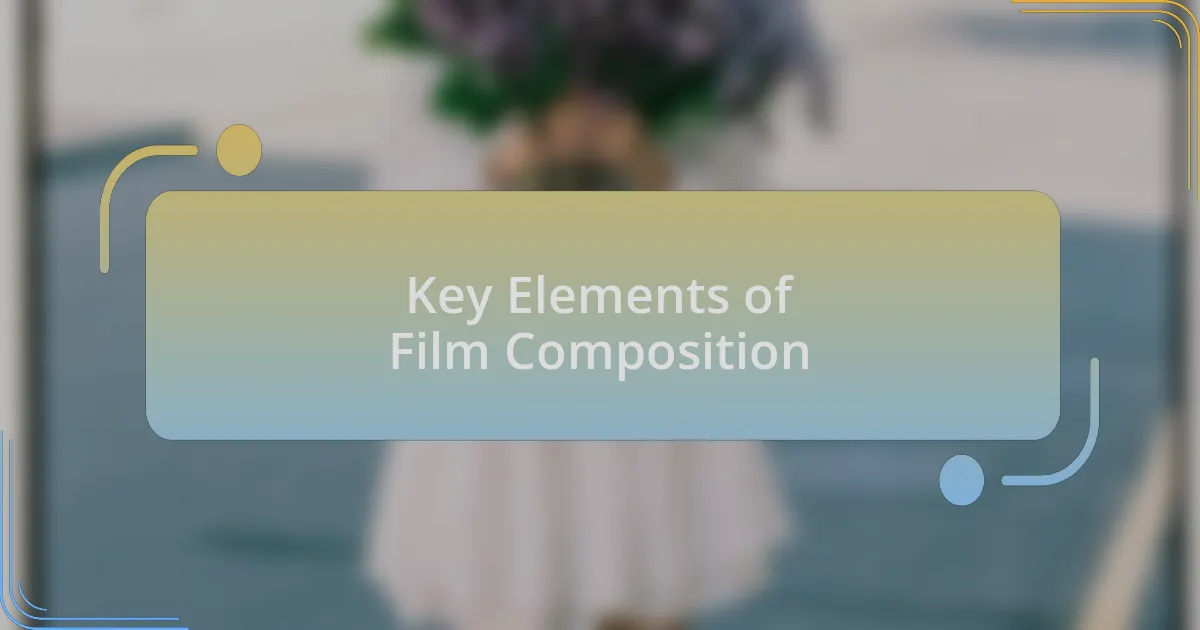
Key Elements of Film Composition
When I think about framing, it’s more than just placing a subject within the borders of the shot—it’s about creating a world that resonates with the audience. I remember a crucial moment in one of my films where I chose a tight close-up. The character’s emotions came alive, and viewers became fixated on every subtle expression. Have you ever felt so drawn in that it felt like the character was revealing their deepest secrets to you? That’s the power of intentional framing.
Another key element is the use of color and contrast, which can evoke specific feelings and set the mood of a scene. In one project, I opted for muted tones when portraying a somber moment, instantly creating an atmosphere of melancholy. The audience’s response was palpable. They didn’t just watch the scene; they felt that heavy weight in the air, didn’t they? Color can truly be a language of its own, speaking volumes without uttering a single word.
Finally, perspective plays a vital role in how we perceive a narrative. I once experimented with low-angle shots to portray a character as larger than life in a pivotal scene. The shift in perspective didn’t just look cool; it transformed the audience’s perception of the character’s power and ambition. Can you recall a moment in a film where a shift in perspective radically changed your understanding of a character? These narrative techniques enrich the storytelling experience, encouraging viewers to engage more deeply with what is unfolding on screen.
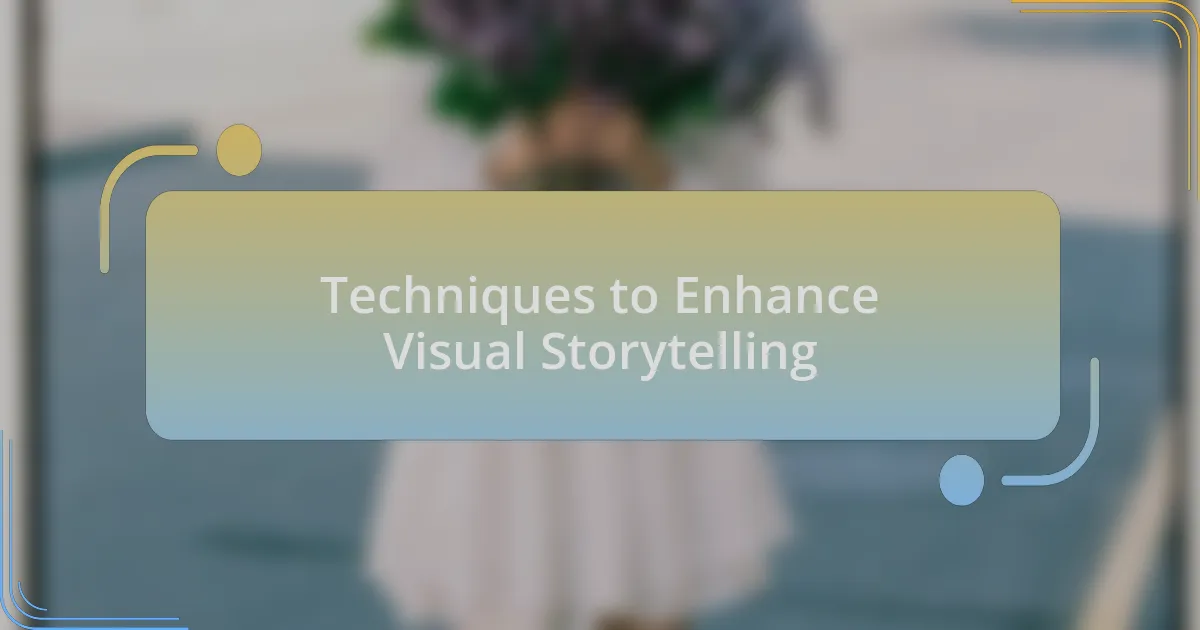
Techniques to Enhance Visual Storytelling
One technique I swear by is the strategic use of leading lines. In one of my films, I employed a winding path that drew the viewer’s eyes toward the horizon. The result? It wasn’t just a pretty shot—it offered a sense of journey and anticipation. Don’t you love when a composition naturally guides you, making you feel more invested in the story unfolding?
Then there’s the concept of negative space. During a particularly tense scene, I chose to leave a large amount of empty space around my character. It created a stark contrast that highlighted their isolation and desperation. The audience could feel that heaviness, almost as if they were in the scene themselves, witnessing the character’s struggle up close. Hasn’t there been a moment in a film where emptiness spoke louder than dialogue?
Lastly, I find the placement of the subject in relation to the background can drastically alter the emotional weight of a scene. When I shot a pivotal moment where the protagonist faced their biggest fear, I chose to position them against a chaotic backdrop. This not only amplified their vulnerability but also made their courage shine through even more. Can you recall how a visual element transformed your perception of a character’s journey? These techniques continuously remind me that every choice counts in visual storytelling.
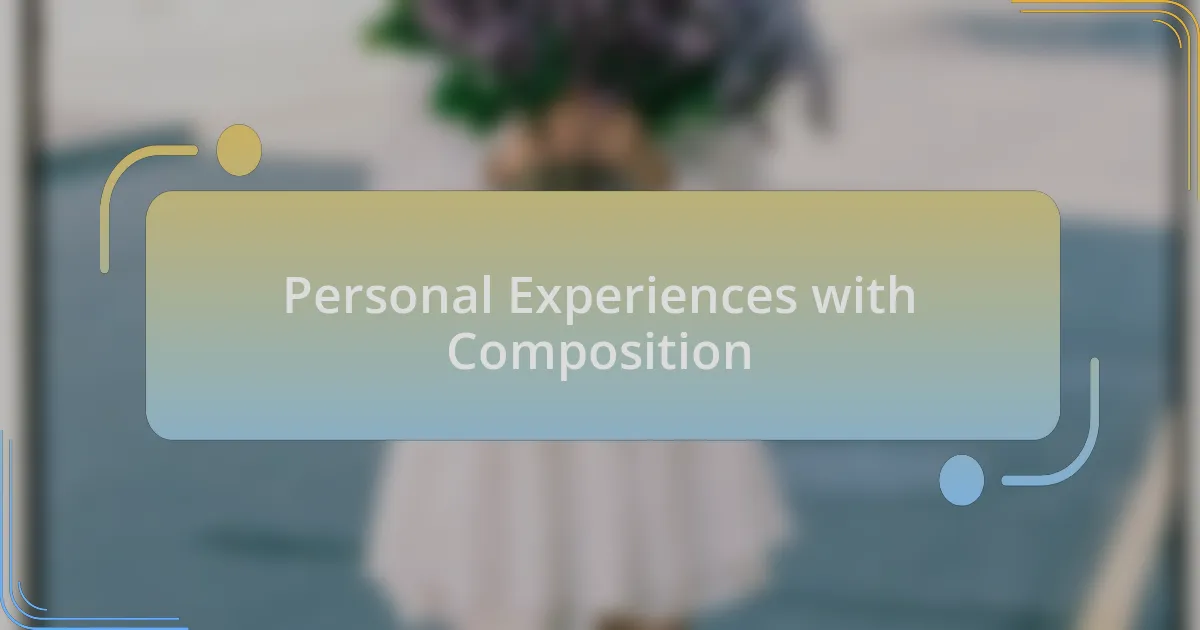
Personal Experiences with Composition
During the production of my short film, I experimented with symmetry and found it incredibly powerful. In one particular scene, I arranged the characters in a perfectly balanced frame, reflecting their emotional connection. To my surprise, maintaining that symmetry evoked a sense of harmony that resonated deeply with the audience. Have you ever noticed how symmetry can make a moment feel almost poetic?
In another project, I became fascinated with the use of depth to create layers within a scene. By placing elements at different distances from the camera, I added visual intrigue. The scene became a dynamic story within itself, and I could see the audience lean in, captivated by the layers of action unfolding. Isn’t it fascinating how these small adjustments can change a viewer’s perspective entirely?
One of my most memorable experiences with composition occurred during a night shoot. I chose a low angle to capture a character looking up at the stars, while the city skyline loomed in the background. The combination of grandeur and intimacy struck a chord, leaving audiences reflecting on their own aspirations against the vastness of life. Have you ever felt a moment in film that made your heart swell? This is why I believe composition isn’t just a technique; it’s an emotional bridge to the audience.
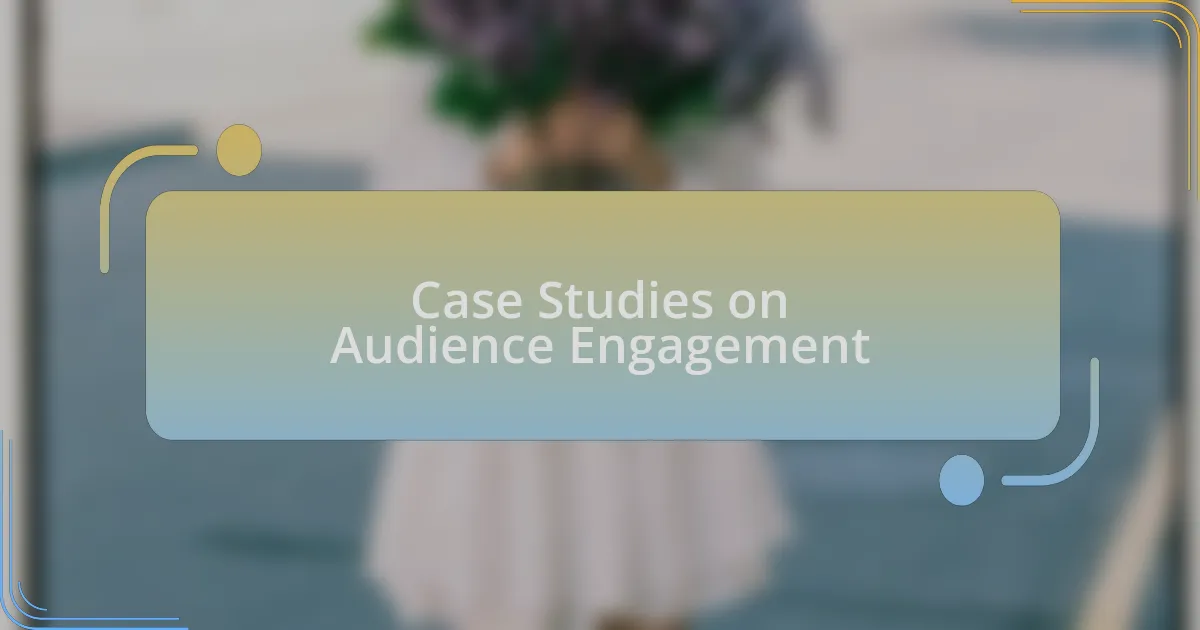
Case Studies on Audience Engagement
In my experience, one standout case study involved a documentary I produced aimed at raising awareness about environmental issues. I employed contrasting compositions—juxtaposing wide shots of lush landscapes with tight, close-up shots of pollution. This visual conflict evoked a strong emotional response, prompting viewers to consider the impact of their choices. Have you ever felt torn between beauty and destruction in a film? That’s the kind of engagement I strive for.
Another memorable project was a romantic short where I played with composition to highlight the characters’ isolation. By framing them within doorways and windows, I visually emphasized their emotional barriers. This layered approach not only drew the audience into the characters’ world but also evoked feelings of empathy and longing. Isn’t it remarkable how composition can mirror emotional states?
Lastly, I worked on a horror film where I utilized unsettling angles and off-center framing. The disorientation created an atmosphere of tension that had viewers gripping their seats. I noticed that this strategic use of space and perspective kept the audience on edge, enhancing their fear and engagement. Have you ever found yourself holding your breath during a suspenseful moment? That’s precisely the reaction I aimed to evoke, demonstrating how powerful composition can be in audience engagement.
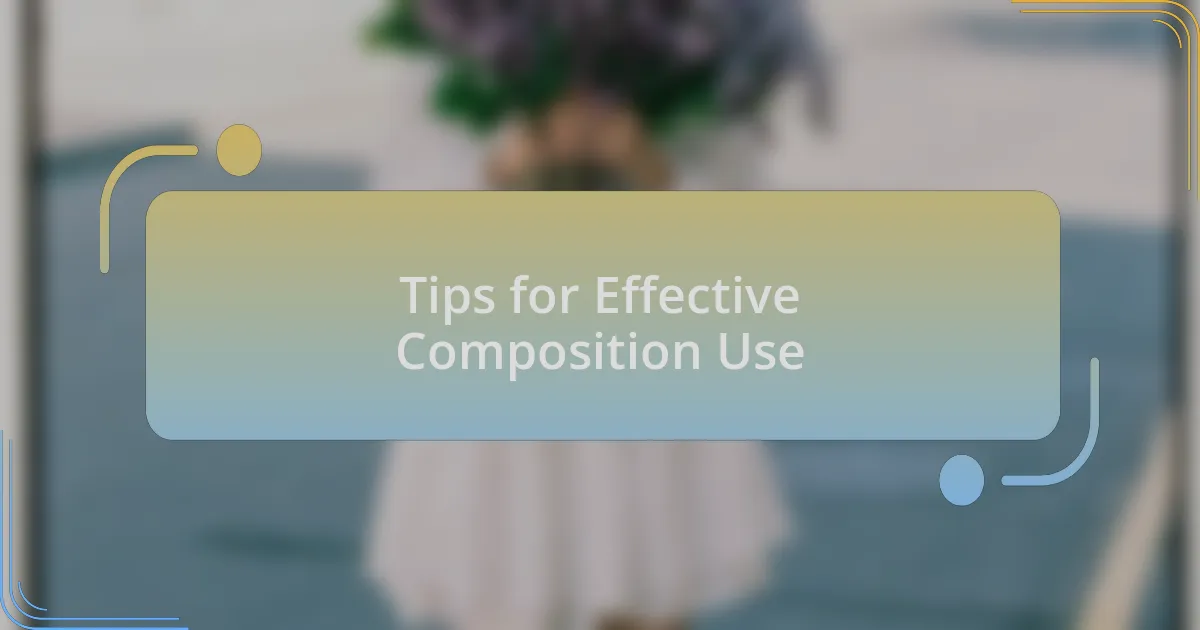
Tips for Effective Composition Use
When crafting compositions, one of the most impactful tips I’ve learned is to think about the balance between negative and positive space. For instance, during a scene in a drama I directed, I left a significant portion of the frame empty. This deliberate choice accentuated the character’s feelings of loneliness, enhancing the audience’s emotional investment. Have you ever noticed how emptiness can communicate as much as the subject itself?
Another technique is to leverage the rule of thirds—an age-old guideline that divides the frame into nine equal parts. In one of my thrillers, I placed critical elements along these intersecting lines, which naturally drew the viewer’s eye. This approach not only creates a sense of harmony but can also lead to unexpected tension. Have you experienced that subtle thrill when your gaze shifts unexpectedly in a frame?
Finally, I always pay attention to the angles I choose. There was a suspense scene where I shot from a low angle to portray a character’s dominance over an adversary. The result was striking; the audience was not only captivated but also felt a shift in power dynamics. How does a change in perspective shape your understanding of a story? It’s a simple yet potent reminder of the emotional responses we can evoke through thoughtful composition.